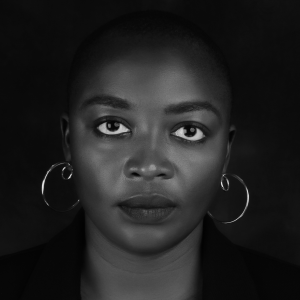

Ojoma Ochai
Managing Partner
The Creative Economy Practice at CcHUB, Nigeria.
Africa’s creative industries are experiencing a surge of exponential growth, indicating tremendous potential for the continent’s economic development. This upward trajectory has been significantly fuelled by the increasing influence of digital technologies, providing new opportunities for creativity, fostering robust distribution networks, and stimulating the creation of new industry sectors such as video game development, mobile app creation, and digital animation.
Alongside the emergence of these new sectors, these digital technologies are drastically transforming traditional creative sectors like music and film, which are witnessing significant disruptions in their Value Chains. Most notable and mainstream is the rapid shift in content distribution (like music and film) to mainly online and mobile-based video platforms and streaming services. The shifts in distribution are driven by a remarkable surge in digital connectivity in Africa influenced by factors such as increased mobile phone adoption, improved network infrastructure, and the increasing availability of affordable smartphones.
While, according to the latest data from the International Telecommunications Union (ITU, 2022), internet penetration in Africa is the lowest globally at 40% penetration, it is worth noting that while low, this does represent a population of 560 million people online – which is about the entire population of North America. Also of note is that internet connectivity grew 13% year on year to 2021, continuing a trend of rapid growth in recent years.
In addition to the shifts in distribution trends, the imprint of digital technology on Africa’s creative industries continues to evolve. Current trends suggest that these advancements hold the potential to fast-track growth across the continent’s creative sector. Artificial Intelligence (AI), Blockchain, and Extended Reality (XR) are fundamental to shifting trends in the global Creative and Cultural Industries (CCIs) (WEF, 2018). In addition, new hardware and software trends are also significantly influencing Africa’s creative industries.
Since its advent in the 1950s, especially in its Machine Learning form, AI has grown tremendously, allowing computers to discern patterns and predict outcomes from large data sets without explicit programming. As exemplified by OpenAI’s GPT, AI is reshaping the CCIs, generating human-like text, composing artworks, and even crafting music. Predictions from the World Economic Forum propose that AI might generate a top 40 pop song by 2027, curate video content by 2028, and even author a bestselling novel by 2049.
However, AI’s power does not come without its risks. Underinvestment in AI could amplify the North/South digital divide, potentially undermining Africa’s creative authenticity and autonomy. Additionally, widespread AI usage in content creation may threaten the fundamental principle of CCIs, Intellectual Property (IP) exploitation.
Also, as AI becomes more ubiquitous and mainstream in the CCIs, Africa might confront an opportunity cost related to human-powered jobs, posing a potential threat to its creative independence. AI could also be a threat to the achievement of Aspiration 5 of Agenda 2063 – to see African arts, heritage, and creative industries celebrated not only throughout the continent but also within the diaspora, as well as seeing these industries contribute significantly to self-awareness, well-being, and prosperity, as well as to world culture and heritage if creation is fully or majorly ceded to, or driven by AI.
Subscribe to the Tax Prism Magazine
Highlighting the capabilities of generative AI, it’s crucial to note that this article, though grounded in the author’s ideas, has been written with assistance from Chat GPT-4*. This intersection of human conception and AI execution raises intriguing questions. Who owns the intellectual property, and how should authorship be attributed? As we navigate the future of AI in content creation, these issues necessitate careful consideration and resolution.
* Chat Generative Pre-trained Transformer (GPT) 4 is a multimodal large language model developed by OpenAI, following the pattern of their previous GPT models. These models, including GPT-3, are part of a series of generative pre-trained transformer models that have significantly advanced the field of natural language processing and understanding.
Blockchain technology, a decentralized database, holds data in interconnected ‘blocks,’ facilitating multiple digital asset ownership. This technology extends its benefits to CCIs, particularly music, by aiding in royalty collections and empowering creators to control pricing and receive direct compensation, minimizing the necessity for intermediaries.
A noteworthy application of blockchain is the emergence of Non-fungible tokens (NFTs) that certify the ownership of original digital artworks. African NFT artists are making their mark in this burgeoning space with multiple auctions and sales of NFTs holding between 2020 and 2021 for NFT artists like Andrew Azekwoh (Nigeria), Fhatuwani Mukheli (South Africa), Jason Osinachi (Nigeria) and Kevin Kamau (Kenya). With a slowdown in 2022, questions remain regarding the sustainability, viability, and environmental impact of blockchain use cases like cryptocurrencies and NFTs, and are a subject of ongoing debate.
Extended Reality (XR), including Augmented, Virtual, and Mixed Realities, merges the virtual and physical realms. This immersive technology introduces innovative storytelling methods, draws a new creator demographic to the CCIs, and presents unique opportunities for cultural content engagement. Despite challenges, XR technology continues to grow and adapt in Africa, with significant contributions from companies like Black Rhino VR (Kenya), Imisi 3D (Nigeria), Dobiison VR (Ghana), and Khayal Studios (Egypt). Digital holography, also blending digital and physical realities, is another area of growth, albeit one that presents ethical considerations related to posthumous performances, as it is, currently, one of the main use cases for the technology.
Hardware and software play a pivotal role in advancing CCIs, streamlining processes across a range of activities from animation and filming to 3D printing. The surge of smartphones and tablets has democratized access to digital content, shaping the reach of CCI products and reshaping creative ecosystems. Advanced hardware like high-quality cameras and production equipment are also enhancing efficiency and competitiveness across creative industries’ production ecosystems.
Software developments, such as computer-generated animation, have revolutionized industries and enhanced content quality. These technological leaps complement human creativity rather than replacements, often reducing entry barriers like costs and effort without entirely substituting existing processes.
In conclusion, as technology continues to revolutionize Africa’s creative industries, it is crucial for the private sector and government to leverage these advancements for sector growth and economic benefit. Strategic investment in relevant infrastructure, enhancing digital literacy, and formulating inclusive and forward-looking policy frameworks can harness the full potential of technology in Africa’s creative sector. In addition, addressing potential pitfalls such as widening digital divides and intellectual property concerns will be paramount to ensure that growth is inclusive, sustainable, and beneficial for all stakeholders involved.